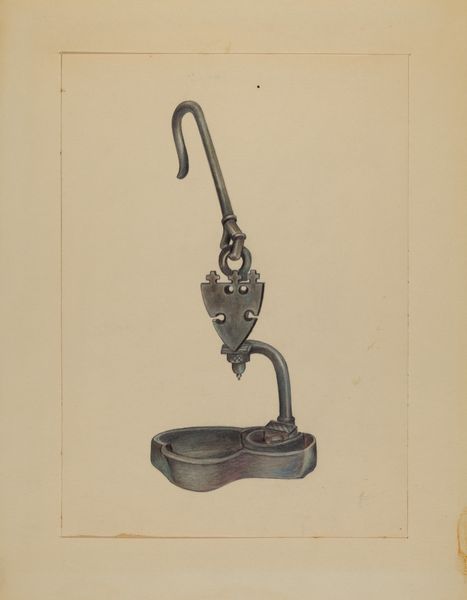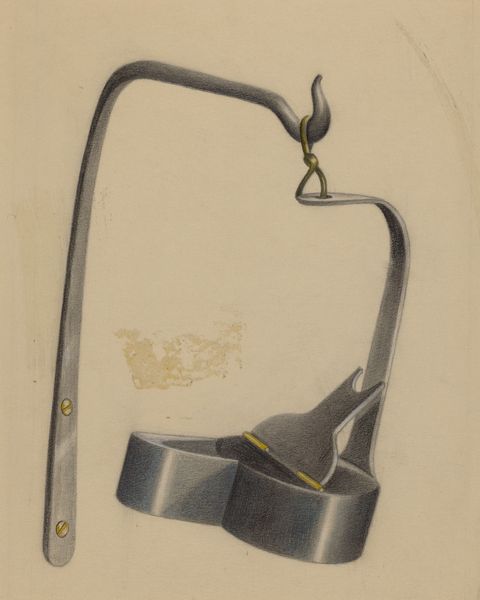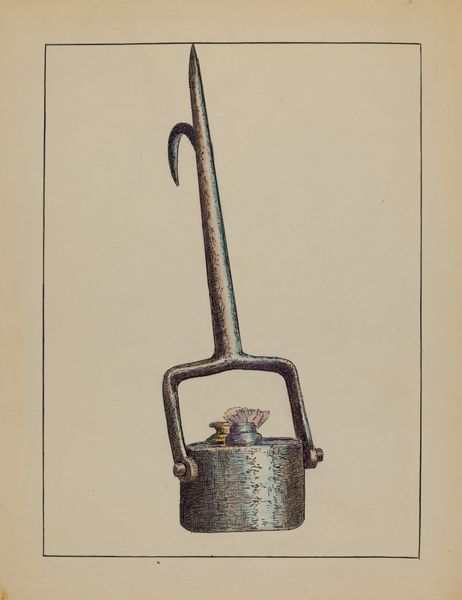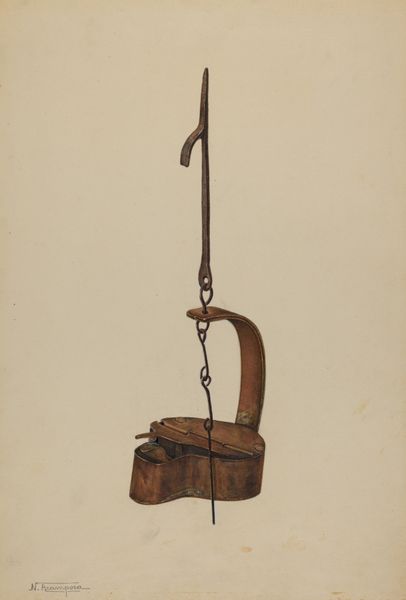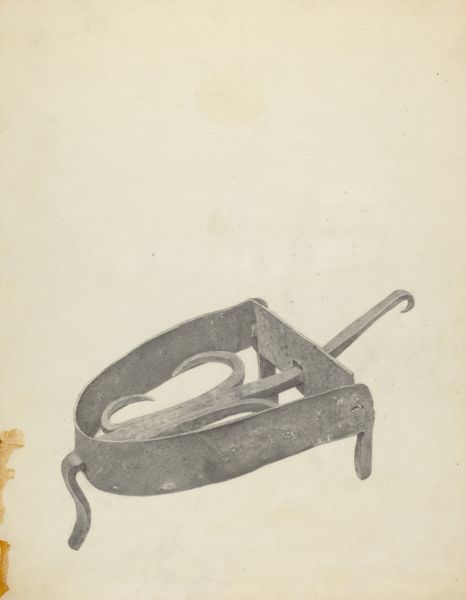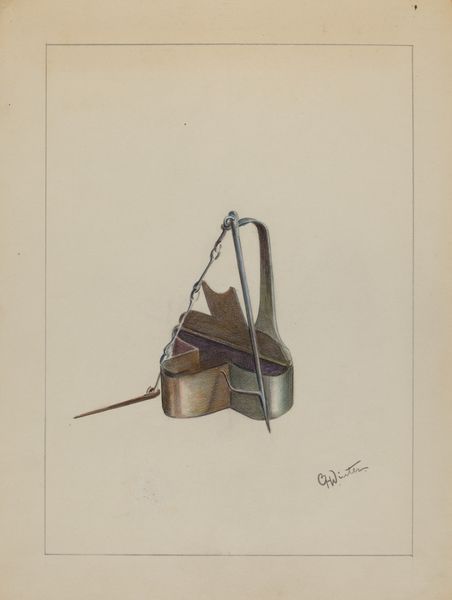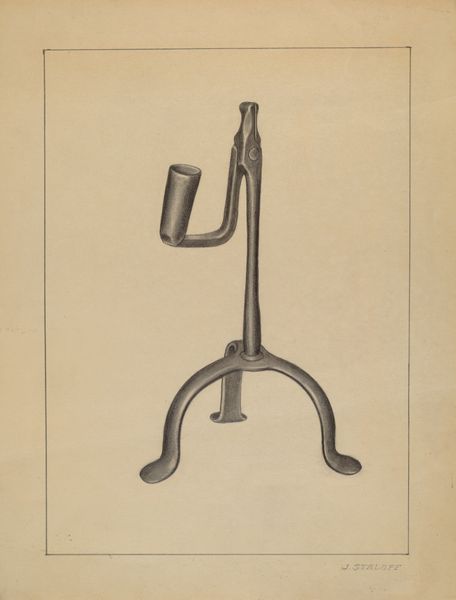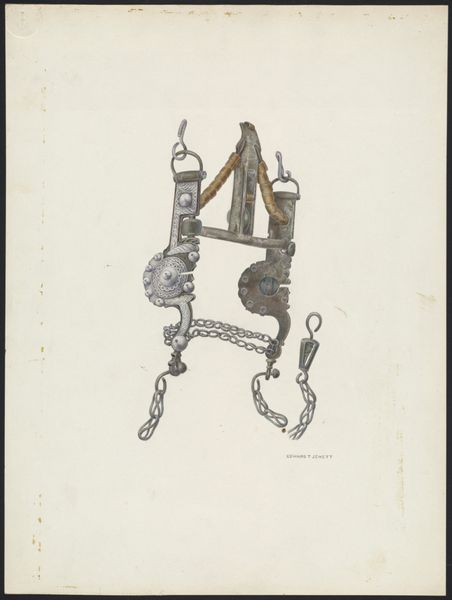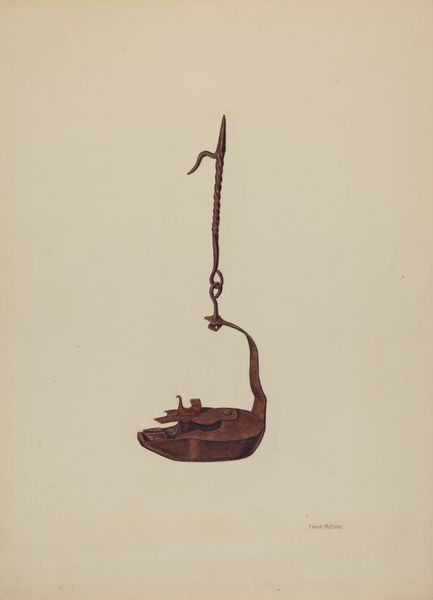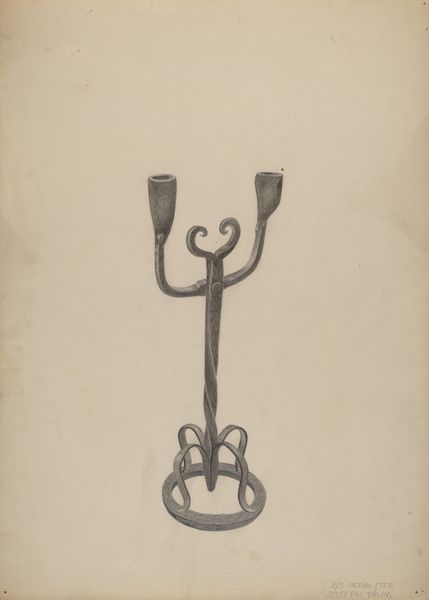
drawing, coloured-pencil
#
drawing
#
coloured-pencil
#
pencil drawing
#
coloured pencil
Dimensions: overall: 30.5 x 22.9 cm (12 x 9 in.) Original IAD Object: 4 1/4" wide; 8" high
Copyright: National Gallery of Art: CC0 1.0
Curator: Here we have Charlotte Winter's "Lamp," a colored-pencil drawing dating from around 1936. The meticulous detailing gives it an almost photographic quality, wouldn't you say? Editor: Indeed. My first impression is of austerity. The cool grays and blues convey a certain somber mood, and the object itself appears rather functional, devoid of ornamentation beyond what is strictly necessary. It brings to mind a time perhaps characterized by restraint, born out of hardship or societal constraint. Curator: And if we consider that it's rendered in colored pencil, we have to acknowledge the labour inherent in achieving that smooth metallic finish. Each stroke contributes to building form, emulating the texture of a potentially mass-produced or utilitarian item. I find myself thinking about who might have produced such a lamp and where it was to be sold. Editor: I wonder about the light that this lamp might cast. Not just in a literal sense, but the light it might shine on domestic life of the period. Think about the labor of maintaining such a lamp, the daily ritual of filling it, cleaning it… and the dependence on that light for essential tasks in an era before readily available electricity for all. It speaks volumes about women's labor and dependence in the household. Curator: It's also intriguing how Winter, seemingly removed from any artistic intention, simply isolates a manufactured item. We can reflect on that specific choice of material to present us this simple piece of craft or product as art. Editor: Exactly, the piece makes one wonder what was its cultural function, or what statement it makes of life conditions. If the material used reflects labor division in this case, gender must also come to the front, but even, more largely, the class or race that must face to daily problems. This all to shed a light on other ways to understand that historical moment. Curator: I appreciate how the artwork invites us to think not just about what is shown, but about the complex processes of its manufacture, marketing and social purpose, all that involved for the production of this object we call Lamp. Editor: Absolutely, this work reminds us that even the simplest object carries with it complex layers of meaning related to gender, class and societal values and how those relationships take place across of different historical and cultural backgrounds.
Comments
No comments
Be the first to comment and join the conversation on the ultimate creative platform.
